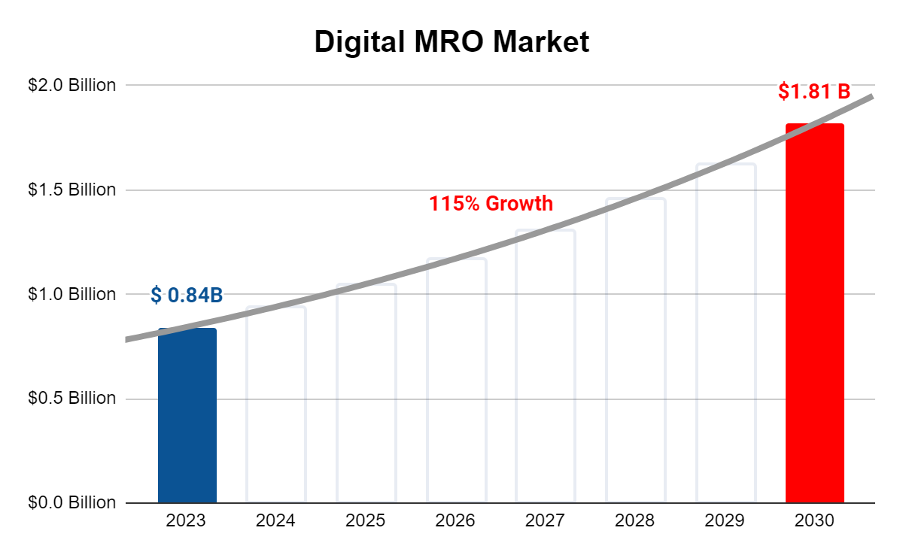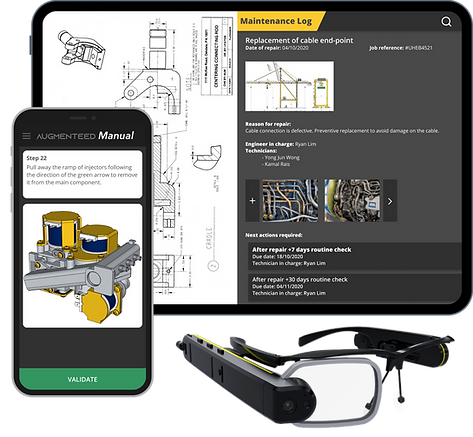Our Marketplace Spotlight is designed to not only help our partners help you understand what they do – but also enable you to make well-considered commercial decisions.
Today we hear from Jasdeep Khara, who is the Sales & Business Development Lead at software vendor Augmenteed. The company prides itself on delivering meaningful, productive and flexible process management software. Here Jasdeep clarifies what pitfalls exist in the MRO software procurement process, and gives advice on how you can avoid costly errors.
MRO Digitization – Managing the procurement process
It goes without saying that technology has fundamentally changed the aviation industry in the last decade.
Consequently formulating an effective digital MRO strategy has become a critical task for organisations wishing to enhance their procedures, processes and protocols in order to maximise efficiencies whilst continuing to meet rigorous safety standards.
Approximately 50% of all airline operating overheads are, directly or indirectly, related to MRO services – and given that existing MRO operations are invariably run as efficiently as possible, most opportunities to improve performance and reduce costs revolve how enhanced digitalization can deliver greater functionality.
According to a recent Market Research Future report, the digital MRO market was projected to grow from USD 606M in 2020 to over USD 1.8B by 2030. That equated to a compounded annual growth rate of 11.6% over the decade. As of 2023 the annual growth rate up to 2030 is expected to be 115%, which means that the market will more than double in size.

But with an abundance of digital solutions, how does an MRO operation best navigate the available options to find the solution that best fits their needs both now, and in the future?
Given how important it is to make sure you’re making the best decisions for your organisation, we’d like to share what we think are the 5 key factors to consider when investigating and interrogating candidate software options – issues that MRO organisations may overlook when digitising their operations.
1. Maintaining the solution – It’s never fit-and-forget
Just as planes need routine maintenance to ensure peak performance, software needs the same to ensure it operates at an optimum. But conducting software maintenance in-house can quickly become a laborious and expensive process, and end up causing more issues than it solves. And we all know an improperly maintained solution will ultimately become a hindrance to day-to-day operations. It’s quite a dilemma.
In an ideal world you want to either leave the heavy lifting to software-specific experts (which are either expensive, external, or both), or find a solution that doesn’t require any specialised technical skills to maintain in the first place.
‘No-code’ solutions, underpinned by consumer-grade UI and requiring zero technical skillsets, are ideal because they afford you rapid ROI by allowing your team to rapidly set up and deploy new or revised procedures within hours. With each new revision of OEM documents, you can manage the changes internally, without having to consult the solution provider. A no-code solution thus reduces pressure on your team’s workload.
2. Device and Platform Agnostic – Being pragmatic
The digital hardware for MRO is just as critical as the software. Different types of devices are suitable in different situations. Technicians may require AR glasses for hands-free operations – whereas supporting roles, such as document planning and tool room processes, work better with phones or tablets that allow data manipulation.
Naturally, a solution that doesn’t support all mobile devices will severely restrict your organisation’s ability to scale up and deploy for different use cases. Worst still, having to switch solution providers due to this restriction will obviously impact existing operational efficiency.
A software solution that supports the full range of devices (phones/tablets/AR glasses) gives you operational flexibility, not least because devices using Android and iOS platform devices represent over 99% of the market. Selecting a solution that is inherently device/platform agnostic is imperative in the long run for multiple operations and use cases.
3. Flexible Connectivity – Avoiding dropouts
While increased bandwidth coverage has come a long way, airports and hangars are often located in remote areas, and consequently, sometimes experience connectivity issues. Regardless of the sophistication of the software solution you employ, losing connectivity will stop you in your tracks. Put simply, a solution that cannot function in low connectivity environments will cost you money.
Ensuring functionality across the entire bandwidth spectrum – from low/no bandwidth, to fully 5G environments – will allow for seamless operations in virtually any location, and deliver the reliability and flexibility you need to keep your MRO system integrity intact.
4. Hosting Multiple Software Solutions – The ‘Single Platform’ dream
Software solutions usually focus on a specific component of the MRO process, or provide a very simplistic/generic platform to cover all use cases. But selecting such a solution can lead to problems down the road, where your organisation might need to incorporate different solution providers to manage different tasks. Managing multiple vendors can become an expensive and time-consuming balancing act, and would only serve to divert critical in-house resources.
Ideally, you need to select a solution that works well for as much of the entire MRO process as possible (from the planning phase, through to the documentation and execution of the MRO itself), and have distinct functionality within the platform for each different task. This would also allow the scaling up of the software solution to incorporate additional departments and necessary functionality, as and when the need arises.

5. Ability to Innovate – Staying a step ahead
At the forefront of digitalization is the adoption of future-ready technologies – such as IoT, AR, AI image recognition, 3D model explorers, remote assistance, digital inspections, training and many more. Ensuring your solution provider has the capability to support emerging technologies will allow you to quickly pivot and exploit opportunities to refine and enhance your operations.
The downsides of a solution that is not future-ready include:
- Limited functionality – The solution may not be able to support future use cases, which could limit your organisation’s ability to evolve to meet new demands
- Increased costs – You may have to invest in additional solutions or retrofit existing ones to integrate with new technologies, which will inevitably increase costs and decrease your ROI
- Inefficient operations – Without access to cutting-edge technologies, you may not be able to optimize operations to the fullest potential, which could lead to inefficiencies and decreased productivity
- Reduced competitiveness – You may fall behind competitors who have in-built functionality to adopt future-ready technologies, making it harder for you to remain competitive
Overall, a solution that is not future-ready will almost certainly limit your organisation’s ability to innovate, optimize operations, and remain profitable in the long-term.
Summary
Whilst there are always many factors to consider when implementing a new digital MRO strategy, we believe that the above 5-Point Guide will serve as a useful tool in planning your organisation’s digitalization initiatives. The benefits of adopting enhanced digitalization for MRO are clear – if deployed intelligently, organisations can improve their efficiency and productivity, reduce error rates, and ultimately reduce the turnaround time (TAT) for aircraft.
With technology-driven efficiencies being sought across all aspects the fast-moving aviation sector, we believe our flexible and forward-looking MRO software platform can help make your digital journey far less complicated than it needs to be.
For more information, to contact or collaborate, contact Jasdeep Khara on Yocova via his personal profile.
You can also find out more about Augmenteed on their Yocova storefront.
Author: Jasdeep Khara – Sales & Business Development Lead
Published 28th March 2023
Sources:
https://www.marketsandmarkets.com/Market-Reports/digital-mro-market-165029525.html
https://www.thebusinessresearchcompany.com/report/digital-aerospace-mro-global-market-report
https://www.airmedandrescue.com/latest/long-read/digital-revolution-mro




